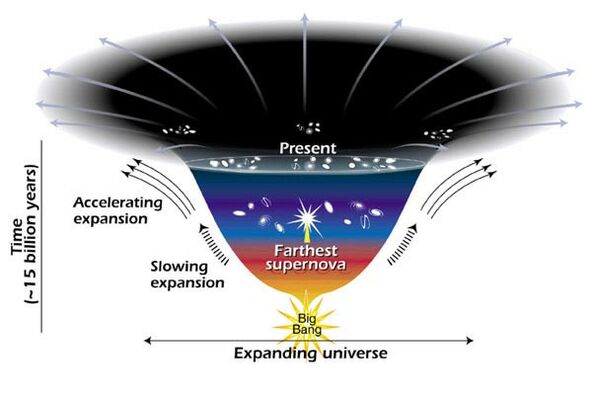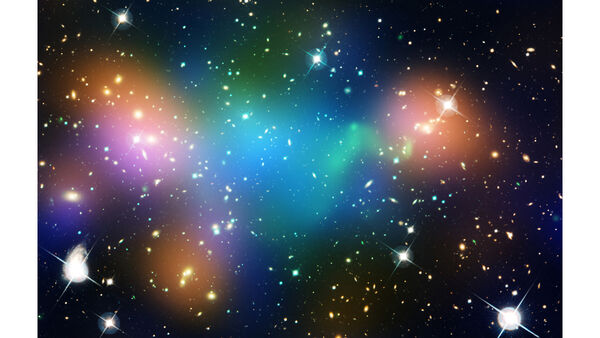Dark Energy and Expansion of Universe

In the mid 1990s, one thing was genuinely sure about the development of the universe. It may have enough energy thickness to stop its extension and breakdown, it may have so little energy thickness that it could expand constantly, however gravity was sure to slow the development as time went on. In truth, the easing back had not been watched, in any case, hypothetically, the universe needed to slow. The universe is brimming with issue and the appealing power of gravity arranges all issue. At that point came1998 and the Hubble Space Telescope (HST) perceptions of exceptionally far off supernovae that demonstrated that, quite a while past, the universe was really growing more gradually than it is today. Along these lines, the extension of the universe has notbeen easing back because of gravity, as everybody suspected, it has been quickening. Nobody anticipated this, nobody realized how to clarify it. Be that as it may, something was causing it.
Inevitably scholars concocted three kinds of clarifications. Possibly it was a consequence of a since quite a while ago disposed of adaptation of Einstein’s hypothesis of gravity, one that contained what was known as a “cosmological steady.” Maybe there was some bizarre sort of energy-liquid that occupied space. Perhaps there is a major issue with Einstein’s hypothesis of gravity and another hypothesis could incorporate some sort of field that makes this enormous speeding up. Scholars actually don’t have the foggiest idea what the right clarification is, yet they havegiven the arrangement a name. It is called dark energy.
What Is Dark Energy?
More is unknown than is known. We know how much dark energy there is because we know how it affects the universe’s expansion. Other than that, it is a complete mystery. But it isan important mystery. It turns out that roughly 68% of the universe is dark energy. Dark matter makes up about 27%. The rest -everything on Earth, everything ever observed with all of our instruments, all normal matter -adds up to less than 5% of the universe. Come to think of it, maybe it shouldn’t be called “normal” matter at all, since it is such a small fraction of the universe.

This graph uncovers changes in the pace of development since the universe’s introduction to the world 15 billion years back. The shallower the bend, the quicker the pace of development. The bend changes discernibly about 7.5 billion years prior, when objects known to mankind started flying separated as a quicker rate. Stargazers hypothesize that the quicker development rate is because of a puzzling, dim power that is pulling systems separated.
One clarification for dim energy is that it is a property of room. Albert Einstein was the primary individual to understand that vacant space isn’t nothing. Space has stunning properties, a considerable lot of which are simply starting to be perceived. The principal property that Einstein found is that it is workable for more space to appear. At that point one form of Einstein’s gravity hypothesis, the adaptation that contains a cosmological steady, makes a subsequent forecast: “void space” can have its own energy. Since this energy is a property of room itself, it would not be weakened as space grows. As more space appears, a greater amount of this energy-of-space would show up. Therefore, this type of energy would make the universe extend quicker and quicker. Tragically, nobody comprehends why the cosmological consistent ought to try and be there, substantially less why it would have precisely the correct an incentive to cause the watched speeding up of the universe.

This picture shows the conveyance of dim issue, worlds, and hot gas in the center of the consolidating universe bunch Abell 520. The outcome could introduce a test to fundamental speculations of dim issue.
Another clarification for how space gains energy originates from the quantum hypothesis of issue. In this hypothesis, “void space” is in reality brimming with impermanent (“virtual”) particles that persistently shape and afterward vanish. In any case, when physicists attempted to compute how much energy this would give void space; the appropriate response came out wrong - wrong by a great deal. The number came out 120 times too large. That is a 1 with 120 zeros after it. It’s difficult to find a solution that terrible. So, the secret proceeds. Another clarification for dim energy is that it is another sort of dynamical energy liquid or field, something that occupies the entirety of room yet something whose impact on the extension of the universe is something contrary to that of issue and typical energy. A few scholars have named this “core,” after the fifth component of the Greek rationalists. Yet, on the off chance that core is the appropriate response, we actually don’t have a clue what it resembles, what it cooperates with, or why it exists. So, the secret proceeds.
A last chance is that Einstein’s hypothesis of gravity isn’t right. That would influence the development of the universe, yet it would likewise influence the way that ordinary issue in worlds and bunches of systems carried on. This reality would give an approach to choose if the answer for the dim energy issue is another gravity hypothesis or not: we could see how worlds meet up in groups. However, on the off chance that it does turn out that another hypothesis of gravity is required, what sort of hypothesis would it be? How might it be able to accurately depict the movement of the bodies in the Solar System, as Einstein’s hypothesis is known to do, and still give us the distinctive expectation for the universe that we need? There are competitor hypotheses, yet none are convincing. Thus, the secret proceeds.
What is expected to settle on dim energy prospects - a property of room, another unique liquid, or another hypothesis of gravity - is more information, better information.
 Never miss a story from us, subscribe to our newsletter
Never miss a story from us, subscribe to our newsletter